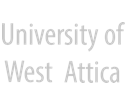The impact of visual communication: The relationship between visual messages with places and objects of everyday life over time
Abstract
Messages, in particular Graphic arts, both a form of communication and a type of applied arts coexist with architecture as a communication of images and symbols. This type of communication has been taking place since the prehistoric cave paintings and the age of plinth houses in the long history of human creation, even until today, in the contemporary world of big cities. In this context, "communication" means: "... the mechanism through which human relationships are created and developed – all the symbols of the mind, combined with their means of transmission in space and of preservation in time.". Through their communicative function, the messages transmit elicit responses, initiate actions brought about major changes also in certain forms of social organization. Because the social response is similar to that of the concept of the nation , advertising becomes the protagonist and turns into a sign-symbol of the values reflected on the physiognomy of the city today, causing a qualitative change in character. The projective plane of advertising in the city is the structured space-location of human activities; that is a social space that mirrors human society. The growth of modern cities is mostly based on many individual business activities. In everyday images there is an obvious absence of forethought as regards advertising within the city, on the part of both the authorities and private initiative. Moreover, vivid collective expression of dislike is illustrated ubiquitously and in every possible way: uncontrolled expressions of aggressiveness, pleas for help, appeals articulated clearly, or less so, that, in any case claim, demand... That is, they reproduce deprecation, indifference and misery, as assumptions of assimilated derogation and violence … Thus, through the aesthetics of "resistance", people imprint their feelings of alienation on the environment of the modern city. The lack of structure not only creates a distorted image, but also suggests that the civilization advances in a crooked and precarious manner. ─ In what way could the cultural environment evolve into a hub to support recovery, elimination of the allure, sadness and violence; to prepare for an emotional, as well as rational, participation to a social dialogue – an exit from the "desert" of the assets accumulated in the past? ─ How is it possible for the contemporary world of cultural and social diversity to be the core of a liberated human life, free of humiliating preset patterns, but with selected-desired concepts? The symbolic dimension of interventions is the integral quality of the social values that produce these mediations, and guide their structuring, if any. Diversity within societies is reflected and impressed on the landscape of cities and countries, leaving its markings on every civilization, an observation we make when we study our object. That is, when we investigate the conditions under which messages became part of everyday life, environmental circumstances, social explorations and financial conditions at different times, places and cultures. Finaly, it is only the society that, through its living desires "may 'paint' the city around us, in its own colors".
Keywords
Communication, visual communication, visual messages, communication of images, graphic arts, applied arts, symbol, sign-symbol of the values, structured space, urban environment, landscape of cities and countries, human society, national cultural asset
DOI: 10.26265/e-jst.v12i2.3246
Refbacks
- There are currently no refbacks.






